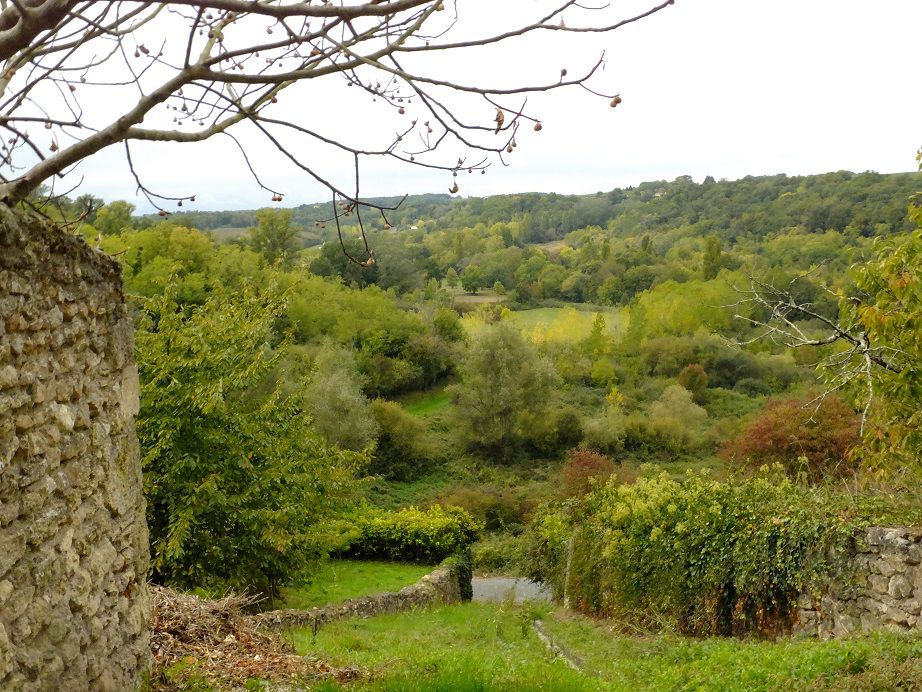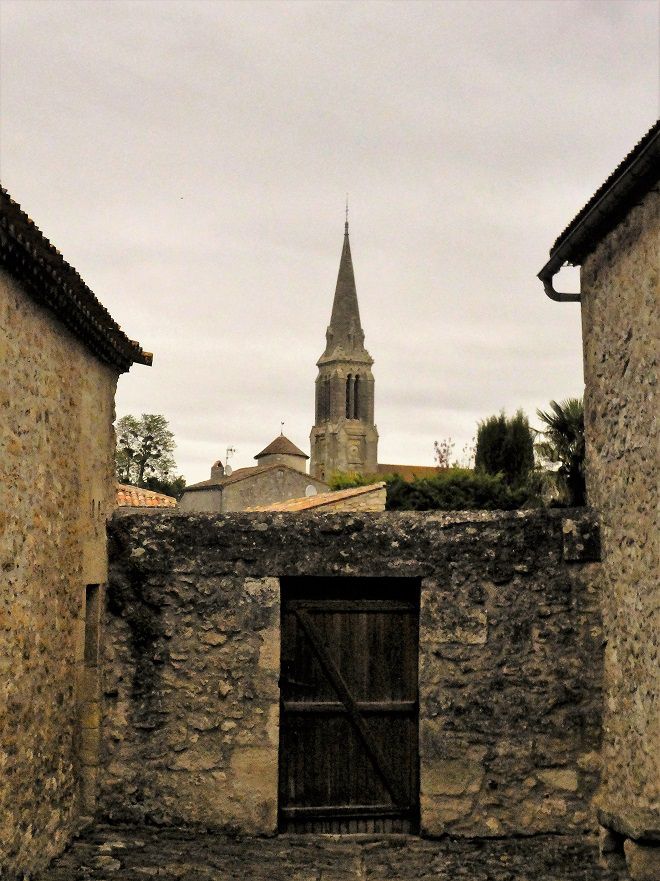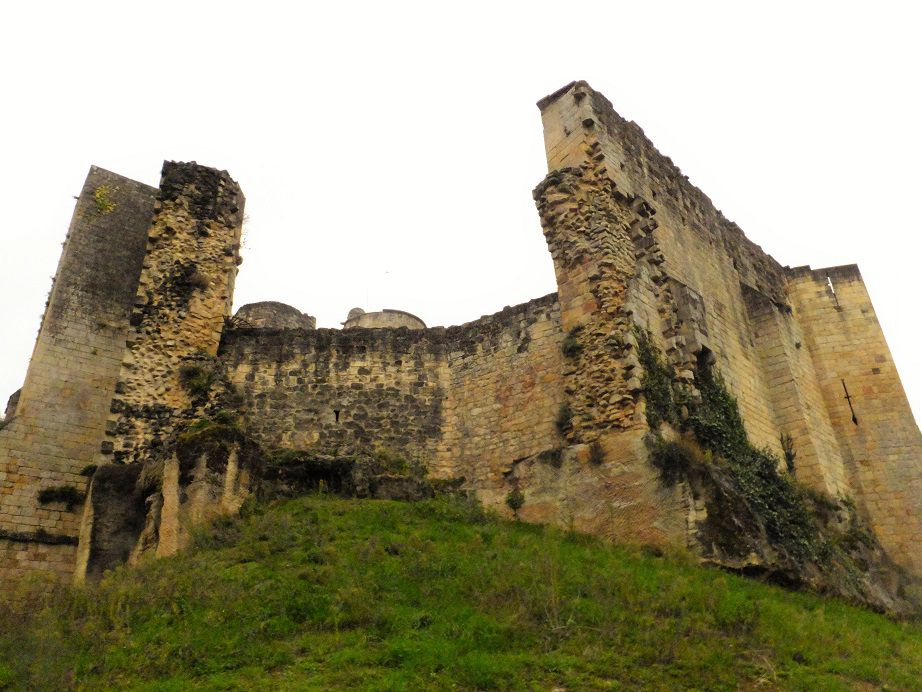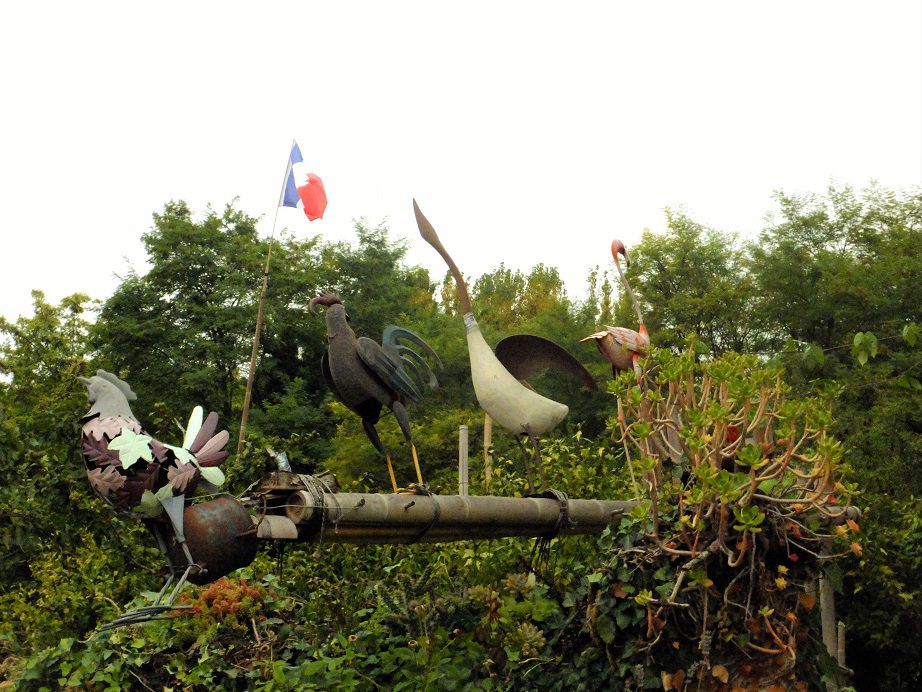 |
| Ancient walls and cobbled streets in Gensac |
On a recent day trip to the Entre-deux-Mers region, primarily known for growing grapes, we decide to stop in this village. It's kind of an afterthought. We've been driving all morning and are eager to find a village with an open boulangerie to satisfy my husband's craving for something savory, and mine for something sweet.
 |
| Gensac's main square in front of the Mairie |
The weekly Friday morning market is over, and we find a convenient place to park in front of the Mairie. The town center has a few amenities, most notably the sought-after bakery. With croque monsieur and a slice of gâteau aux amandes in hand, we check out this area of town. I see a sign that says museé and I make a beeline for it.
 |
| Maison de Boulanger in Gensac |
The museum, la Maison de Boulanger á Gensac, is dedicated to the art of bread-baking. It seems quaint and kind of quirky — my type of museum, but it is closed at the moment. Posted hours are Tuesday through Friday at 3:30 p.m. and Saturday at 4:30 p.m. If you go, call ahead, 05.57.47.46.67.
My husbands points out something that he knows will tickle my (cat) fancy: un gargouille de chat. I can't help but think of another village, la Romieu in the Gers department. Click here to read that blog post.
 |
| The corner of a building in Gensac |
On the day of our visit, the autumn colors are just starting, and I take some pictures of the turning leaves and the valley views before we head to the old part of town.
 |
| Une petite ruelle in Gensac |
 |
| View from downtown Gensac |
With its position overlooking two valleys, the Dordogne and the Durèze, the views from Gensac are quite pretty.
 |
| View from the other side of Gensac |
 |
| The belltower of l'église Notre-Dame as seen from behind the Mairie in Gensac. |
A few blocks from away (in fact we nearly miss this part of the village, as we see the sign as we are driving out of town) is the ancient part of Gensac. We stay awhile longer to admire the medieval architecture and the exterior of L'église Notre Dame. The church's foundations date back to Roman times; the building itself is from the 19th century.
 |
| L'église Notre-Dame in Gensac |
Gensac hosts numerous activities in the summer months, but it's quiet here this time of year. However, the town is worth exploring if you happen to be in the neighborhood. Gensac is located about halfway between (and a little south of) Sainte-Foy-la Grande and Castillon-la-Bataille, and 20 km north of Duras. Contact the Gensac tourism office to arrange a guided visit of the village, 05.57.47.46.67.




















